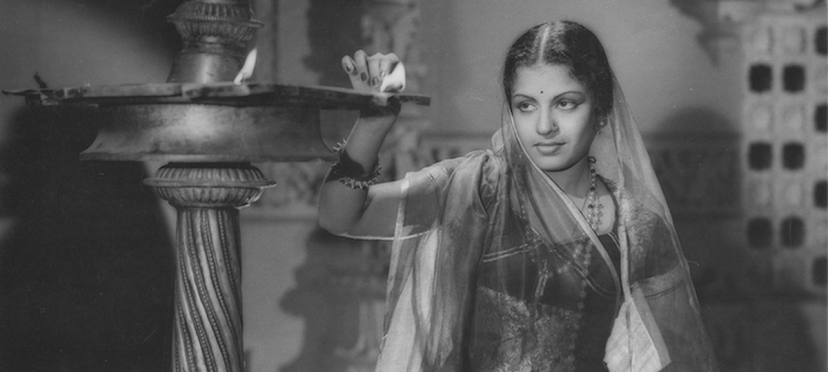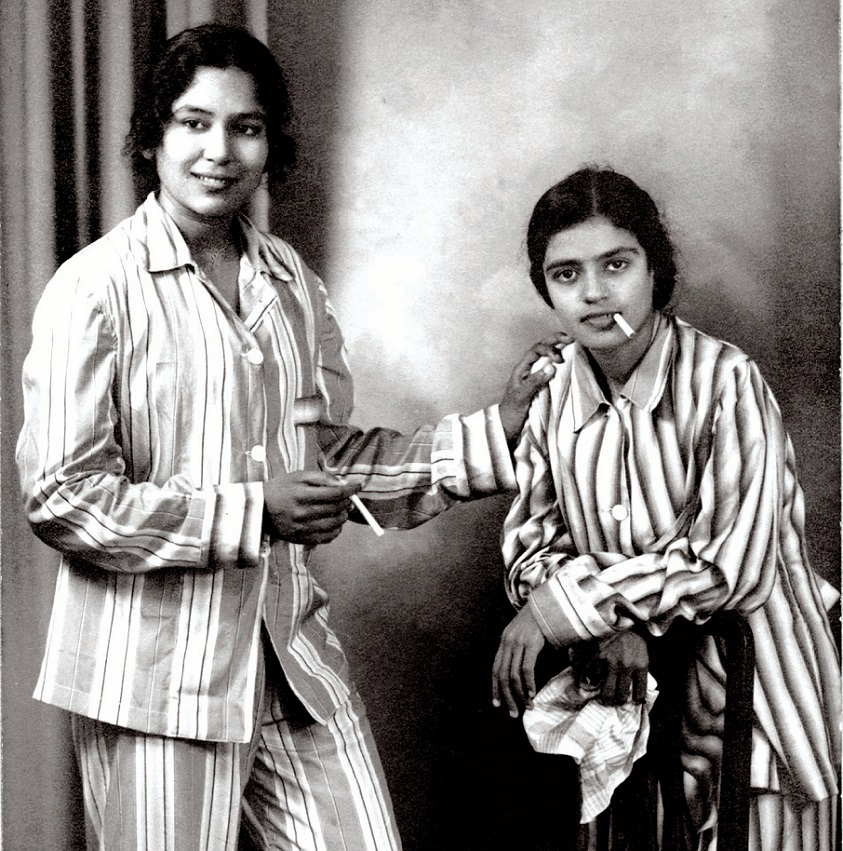MS Subbulakshmi
This is a collection of articles archived for the excellence of their content. |
Contents |
A profile
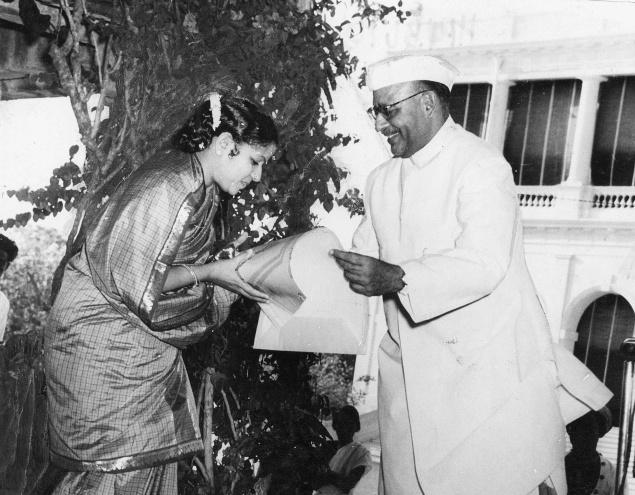
The Hindu, September 16, 2015
The voice that immortalised ‘Bhaja Govindam’ and made Sri Venkatesa Suprabhatham and the Vishnu Sahasranamam popular household chants is 100 years on Wednesday. M. S. Subbulakshmi, as we know her, was born on September 16, 1916 in Madurai and moved to the city when she was just 16 years old where she lived till she breathed her last.
After her marriage with T. Sadasivam, co-founder of Kalki magazine, she moved to a rented house on Big Street in Triplicane where he was living then. “It was only after they made the film Meera that they bought Sladen Gardens, which later became Kalki Gardens,” recalls a long-time associate of the family. The Kalki Garden property was later sold to Mahrishi Mahesh Yogi. “When he came to the house, an arthi was performed at the puja room on the first floor. At that time he told Sadasivam Mama that she has reached an exalted position where the rest of us try to reach,” he recalled. The Sadasivams have lived in homes on Barnaby Road, Poonamallee High Road and Kotturpuram but the longest was at Kalki Gardens. Unfortunately none of these properties were made into any kind of memorial or preserved in the memory of M.S. Apart from concert halls, public functions and weddings, the Ganesha temple on Big Street in Triplicane and the Anjaneyar Temple near the Thannithurai market are the only two places in the city where M.S. used to visit with her husband. “She wouldn’t go anywhere without him. She never even went shopping. Her silk saris used to be supplied by one Muthu Chettiyar. From time to time he would bring three saris and Amma, Radha and Vijaya Rajendran would wear similar saris to concerts,” he said. Her first public concert in the city was organised by the Indian Fine Arts Society on December 28 at Saundarya Mahal in George Town. She was accompanied by T. Gururajappa on the violin and her mother on the veena.
On January 1, 1935, The Hindu carried a listing about her concert at The Madras Music Conference at the special pavilion behind the Ripon Buildings, People’s Park. It said: “5.30 to 7.30 p.m. Sri Subbalakshmi of Madura – vocal, Mr. Sankaranarayana Aiyar – violin, Hamsa Damayanti – Mridangam.”
She wouldn’t have even dreamt on that day that one day she would offer a fund-raiser concert for The Music Academy - where the Chief Guest was Prime Minister Jawaharlal Nehru - or that she would be the first female musician to receive the coveted Sangita Kalanidhi Award.
It was also in Madras that she received the Padma Bhushan in March 1955. According to a report in The Hindu , Sri Prakasa, the then Governor of Madras, presented the medal and Sannad at an event at the Raj Bhavan. Sri Prakasa said that he was asked by the President to present the decoration to “the great and talented artiste” Srimathi M.S. Subbulakshmi. He was sure that Madras would feel proud of it and he himself felt greatly honoured in handing it over to her.
A legend: 1916-2004
The Hindu, September 22, 2015
M. S. Subbulakshmi, in the 100 years since her birth, has had an irreplaceable influence over classical musicians spanning across age, gender and borders. It was destined that the universal and the eternal quality of her musical oeuvre would immortalise her in the world of Indian classical music. Despite the charm that chartered her to the cinema world in the early 1930s and the conferment of prestigious awards like the Padma Bhushan when she was just 38, the aura of purity and devotion to tradition that she exuded went far beyond music.
Achievements
The Hindu, September 22, 2015
1. The first musician to be awarded the Bharat Ratna, India’s highest civilian honour, in 1998.
2. The first Indian musician to receive the Ramon Magsaysay award, Asia's highest civilian award, in 1974.
3. The first woman to be honoured with the title Sangeetha Kalanidhi, considered the Nobel of Carnatic music, by the Music Academy in 1968.
4. Her first recording was released at the age of 10 and she made her first public performance at the age of 16. An expert in devotional musical forms in different languages including Tamil, Kannada, Sanskrit and Malayalam, MS held concerts at Carnegie Hall, New York and the UN General Assembly on UN day in 1966.
5. Recipient of the Padma Bhushan in 1954, Padma Vibhushan in 1975, Sangeet Natak Akademi Award in 1956, the Kalidasa Samman in 1988, the Indira Gandhi Award for National Integration in 1990.
From music to movies
The Hindu, September 16, 2015


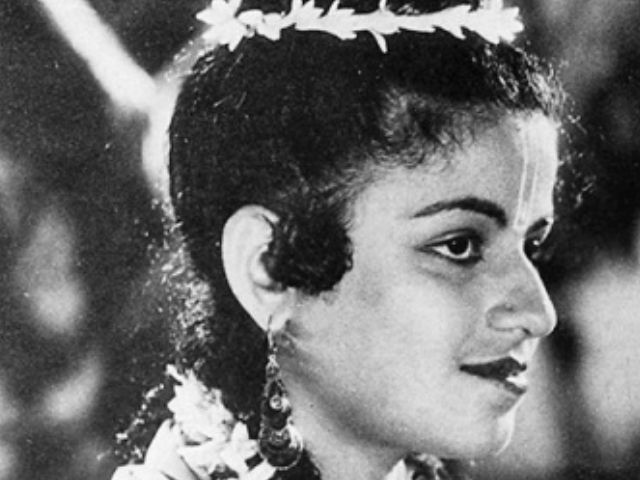
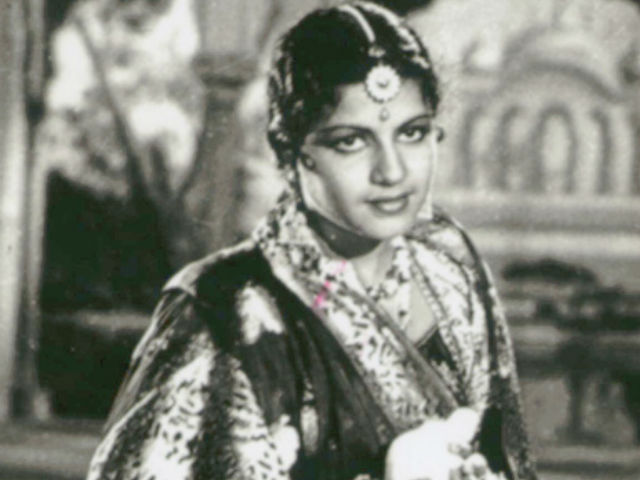
Srinivasa Ramanujam
Madurai Shanmukhavadivu Subbulakshmi, or MS, as she is popularly known, was a musical genius. But there was another side to her; she was also an actor.
Sevasadanam (1938)
Director: K Subrahmanyam
One of the early films to advocate reformist social policies, this project, said to be a film version of a Premchand novel, was directed by K Subrahmanyam. “It was he (K Subrahmanyam) who found a star in MS,” says Film News Anandan, film chronicler, “Sevasadanam, a film on social reform, ran very well in those days.”
Sakuntalai (1940)
Director: Ellis R. Dungan
A film on Shakuntala’s life, this film was directed by American director Ellis Dungan. It featured another Carnatic musician, G.N.Balasubramaniam, in the male lead. It was also the film that had MS in tears - because Ellis Dungan scolded her in front of everyone (with the permission of her husband, Sadasivam) in order to extract a befitting the performance! Sakuntalai featured many songs; two of them were six-minute songs, at a time when three-minute numbers were the norm.
Savithri (1941)
Director: Y.V.Rao
The title role of this flick was played by Marathi and Hindi star Shanta Apte, who learnt her lines in Tamil to play it to perfection. MS was also part of the team, but was cast in a male role – playing the character of Narada! This unique casting, the idea of the filmmaker (Y.V.Rao), caught the fancy of movie-going audiences and ensured that the film was the talk of the town. This project is also said to have raised funds for Kalki, the national Tamil weekly launched by Subbalakshmi’s husband, Sadasivam.
Meera (1945)
Director: Ellis R. Dungan
If her other films established her as an actor, MS became a national star after the release of Meera, first in Tamil and subsequently in Hindi. The historical film fully utilised MS’s singing prowess – the ‘Katrinile Varum Geetham’ number is popular to this day. The film’s Hindi version, which featured an introduction by Sarojini Naidu, catapulted Subbulakshmi to fame.
At music academy
The Hindu, December 10, 2014
• NITYA MENON
Witnessing the making of a musical legend
M.S. Subbulakshmi gave her first public performance in Madras at a concert organised by the Indian Fine Arts Society on December 28, 1933
Despite being a regular in the city’s concert circuit from 1933, earning a slot at the prestigious The Music Academy was not easy for M.S. Subbulakshmi
It was 81 years ago in 1933, when a 16-year-old M.S. Subbulakshmi moved from Madurai to the big city of Madras. Madras city, up until then, unfamiliar with the young singer, witnessed her first public performance at a concert organised by the Indian Fine Arts Society on December 28, the same year.
Accompanied by T. Gururajappa on the violin and her mother on the veena, Subbulakshmi performed at Saundarya Mahal in George Town.
Despite receiving rave reviews and becoming a regular in the city’s concert circuit, earning a slot at the prestigious The Music Academy was not easy. M.S. had to prove herself before she could stake her claim to the Academy’s stage.
In 1934, M.S. enthusiastically participated in the theory sessions and lecture demonstrations during the Academy’s annual music conference. But, it was only in 1935 M.S. got an opportunity to showcase her talent at the Academy’s annual season. The Hindu, on January 1, 1935, published a four-line listing of the concert in the ‘Engagements for tomorrow’ column on page 12 of the paper. It read, ‘5.30 p.m.–7.30 p.m. Sri Subbalakshmi of Madura – Vocal, Mr. Sankaranarayana Aiyer – Violin, Hamsa Damayanti – Mridangam…’ The performance proved to be a turning point for M.S., with even The Hindu’s ‘hard-to-please’ music critic K.V. Ramamchandran being impressed.
In a picture of the group of musicians who participated in the music conference, published days after the concert on January 3, 1935, one can spot the adolescent M.S. wedged innocuously between two female artistes. At the time, the 18-year-old aspiring singer was probably oblivious to the fact that in the years to come, she would become one of the most celebrated cultural icons in the nation.
Therefore, being featured by The Music Academy during the Margazhi season, for the first time in 1935, may have seemed to the young girl, her biggest achievement yet, at that point of time.
Teenage posturing
The [now famous] image of the Carnatic vocalist and Balasaraswati, in silk pyjamas and with cigarettes, reveals them as girls who just wanted to have fun.
Balasaraswati Her Life & Art
One day in 1937, two young long-haired women in saris stepped into a small photo studio in Madras. They changed into striped pyjama suits and struck a pose in front of the studio camera. One of them leaned languidly against a chair, while the other’s eyes focused on something outside the frame. Both of them held cigarettes.
The world-renowned Carnatic vocalist MS Subbulakshmi and the legendary Bharatanatyam dancer Balasaraswati were just having a bit of fun.
“The two teenaged friends both became world-famous artists,” wrote Douglas Knight J in the biography Balasaraswati: Her Art & Life. “From strictly disciplined households, the two asserted their independence by secretly arranging this photograph of themselves dressed outrageously in Western-style sleepwear and pretending to smoke cigarettes.”
This iconic photograph was first made public only 73 years later, in the 2010 biography of Balasaraswati penned by her son-in-law Douglas Knight J. By this time, the successful careers of these artists were so highly revered over decades, almost deified, that this picture quite suddenly threw light on a whole new aspect of their lives – just two young friends attempting to do something unconventional.
“Neither of them wore western clothes, they didn’t smoke – nothing like that,” said Aniruddha Knight, Balasaraswati’s grandson and a professional Bharatnatyam dancer. “It was just to do something different. All they could do throughout their lives was concentrate on their learning and career. This is just a step away from all of that.”
Nobody knows who the photographer was or where exactly it was taken. But the publishing of this picture received mixed feedback for humanising these celebrities.
The stir caused by the release of the photograph among fans of both luminaries is perhaps understandable, particularly in the case of Subbulakshmi. While both women were known to be torchbearers in the traditional South Indian art forms, Subbalakshmi’s persona, according to several accounts, underwent a drastic transformation after her marriage to T Sadashivam, a writer with a nationalist worldview.
According to TJS George’s biography M.S. Subbulakshmi: The Definitive Biography, Subbalakshmi’s career and public image was steered and moulded by Sadashivam from that of a talented young devadasi – a community that has traditionally taken to performing arts – to an the ideal, devout Brahmin wife.
“We can see clearly how MS’s style changed just from her attire,” wrote the acclaimed Carnatic musician TM Krishna in the magazine The Caravan. “Gone were the puffed sleeves and casual saris. Even more dramatically, gone was the MS of that early, fun photograph in which she is pictured with a young Balasaraswati, in Western-style sleeping suit, sporting an unlit cigarette in her mouth. We can now only visualise her in conservative smarta-brahminkattu, the style in which she draped her sari.”
In 1945, Subbulakshmi shot to national fame with her portrayal of the saint Mirabai in the movie Meera. According to TM Krishna, the fact that this was the last film she acted in shaped her persona, “etching the image of Meera forever on the frame of MS”.
Focus on the art
Film historian Theodore Bhaskaran said that when he once approached Subbulakshmi’s residence to interview her for his book on the history of Tamil cinema, her husband Sadashivam told him that she was not interested in talking about her film days. Bhaskaran said that much of the writing on MS Subbulakshmi’s life has downplayed her cinema days, as if it was not respectable.
While Balasaraswati followed the matrilineal traditions of the devadasis by staying with her extended family in her original home, and taking a partner who also supported her art, this was not the case with Subbulakshmi. Nevertheless, both of them went on to be lifelong friends. Each features in the other’s biographies, albeit in brief references: Balasaraswati performs at an event organised by Subbulakshmi, Subbulakshmi is supportive of Balasaraswati when her partner RK Shanmukham passes away.
Knight said that the photograph of the two friends in the studio was published so that people would understand that these artists were also regular people with different facets to their personalities. Although hundreds of fans appreciated this move, he also received a lot of criticism saying that it was disrespectful to their memory.
But Knight is of the opinion that rasikas, or aesthetes, should only concentrate on the art of these performers, while respecting their personal life.
“It is a very important picture that goes to show that not everyone was born with a nine-yard saree or does everything with tradition,” Knight said. “That is our own perspective, and we don’t like things that fall out of it. We all need a jolt sometimes.”

